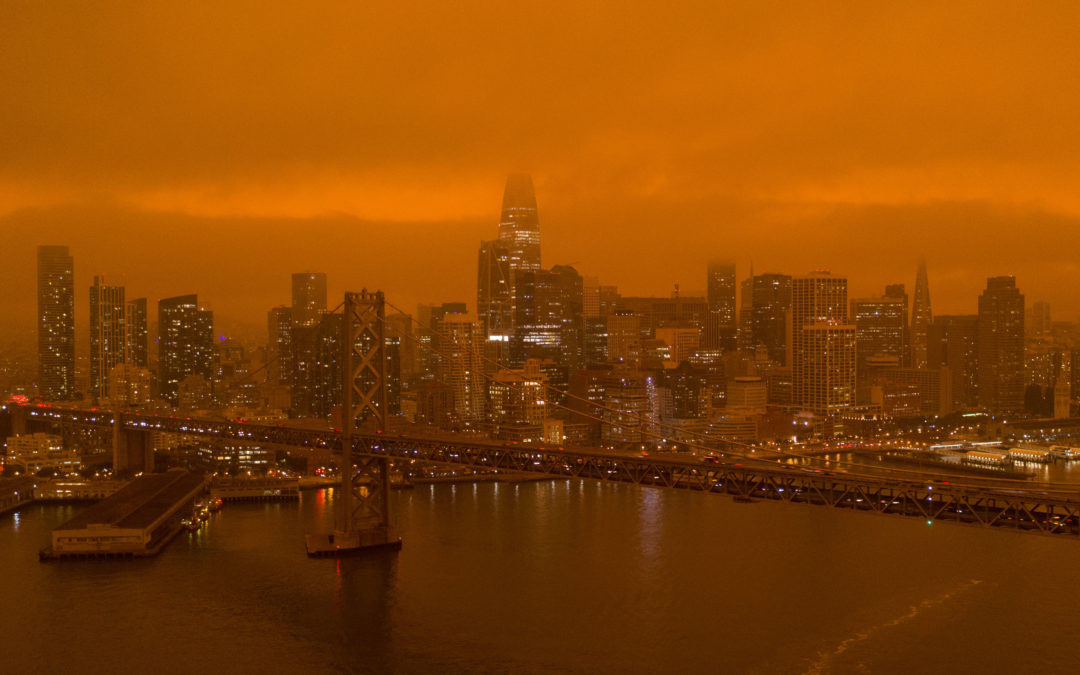Five out of the top ten largest wildfires in California occurred in 2020, according to the California Department of Forestry and Fire Protection (CAL FIRE), including the August Complex, SCU Lightning Complex, LNU Lightning Complex, North Complex, and Creek Fires. These five fires alone burned more than 2.4 million acres, destroyed 5,856 structures and resulted in 22 deaths. The 2020 wildfires havealso had a significant impact on the Napa Valley region of Northern California which is home to more than 500 wineries and produces nearly half a million tons of wine grapes each year, with grape crops in Sonoma, Napa, Mendocino, and Lake counties valued at $1.7 billion in 2019. Wineries who escaped fire damage now face losses from grapes tainted by wildfire smoke, which are unusable for wine production. The Santa Rosa Press Democrat reported that smoke taint could reduce the value of this year’s grape crop by $473 million, according to Brian Clements of Turrentine Brokerage, a wine and grape brokerage.
Factors driving the recent rise in California wildfires include years of unusually low precipitation, warmer temperatures in spring and summer, changing forest management practices resulting in an accumulation of combustible brush, and earlier winter rains and spring
snowmeltscausing drying of forest vegetation in the summer. These climate changes have caused California’s fire season to start earlier and end later each year, with the fire season estimated to have increased by 75 days. To date in 2020 there have been 8,486 fires in California whichdamaged or destroyed 9247 structures, caused 31 fatalities, and burned 4.1 million acres, more than the previous three years combined. Based on direct written premiums in 2019 for homeowners and fire and commercial multi-peril business insurance,insurers with the most exposure to 2020 fire claims are:
1. Farmers Insurance Group: ($1.4 billion homeowners, $736 million fire and commercial)
2. State Farm: ($1.6 billion homeowners, $245 million fire and commercial)
3. Liberty Mutual: ($582 million homeowners, $364 million fire and commercial)
4. CSAA Insurance Exchange: ($574 million homeowners)
5. Allstate: ($535 million homeowners)
6. USAA: ($523 million homeowners)
Despite the unprecedentedsizeof the fires, the 2020 fire season has so far caused substantially less structural damage than the 2017 and 2018 seasons. 2017 saw10,280 structures destroyed, more than the previous nine years combined. 2018 more than doubled that record and remains California’s deadliest and most destructive wildfire seasonin history with 24,226 structuresdestroyed and 100 fatalities. According to the California Department of Insurance, insured wildfire losses were nearly $12 billion in 2017 and exceeded $13 billion in 2018, although these amounts were partially offset by the$11 billion subrogation settlement between insurers and Pacific Gas and Electric Company for the role of its electrical equipment in starting the fires. In September, while multiple fires were still blazing, Moody’s Investors
Servicedeclared 2020 to be the third-highest year for California insured wildfire losses, with an estimated $4.8 billion in insured losses. In comparison, the 2019 fire season was relatively modest, withtotal insured losses of approximately $900 million. The Kincade Fire was the largest fire that year in California, burning 77,758 acres in Sonoma County and destroying 374 structures, and 2019 concluded with 7,860 fires burning a total of just 259,823 acres. Nationwide, the number of acres burned in 2019 was the lowest since 2004, due to weather anomalies such as heavy precipitation in the spring that continued into May and June in some states keeping vegetation wetter than normal, and the absence of extended heat waves.
While the scale of California wildfires in 2020 has already broken records, the season is not over yet and thethreat of new wildfires remains. The Camp Fire of 2018, still the most destructive fire on record in California, did not start until the eighth of November and the National Weather Service recentlyissued a “red flag warning” for parts of the state due to forecasts of gusty winds, high temperatures, and extremely dry conditions with humidity levels as low as 8%. Decades-longweather trends of increasingly hotter temperatures andhistorically low precipitation, combined with changing forest management practices and homes being builtever closer to forest boundaries, mean that the relatively mild fire season of 2019 is unlikely to be repeated in coming years. If current trends continue, the 2021 wildfire season has the potential to set new records and may even surpass2018 as the worst and longest fire season ever in California.





















